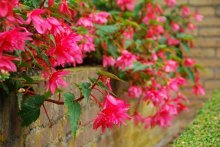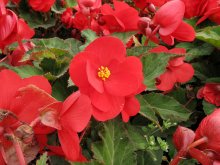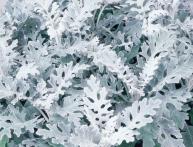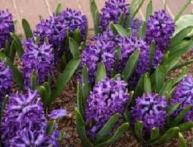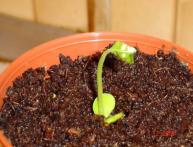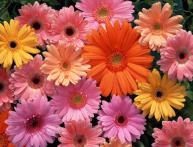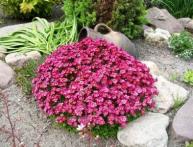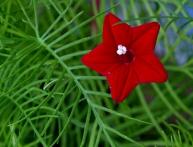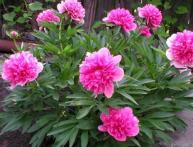Indoor begonia flower, propagation at home
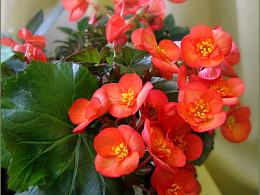
In many houses, at least one flowering or decorative leafy begonia grows on the window, because propagation of this potted crop at home is quite accessible even to a novice gardener. It turns out that the common indoor begonia, the ancestors of which were discovered by the French monk and botanist Charles Plumier, belongs to the largest genus of the Begoniaceae family.
After the discovery of America and the islands of the West Indies, one of the French statesmen Michel Begon equipped an expedition to the Caribbean islands. It included C. Plumier. When he discovered unknown plants, he named them after his friend and patron begonias.
Later, begonia species were discovered in India, Africa, South America and on various islands with tropical and subtropical climates. The culture showed a tendency towards hybridization, which marked the beginning of breeding work with it in the middle of the 19th century. Thousands of varieties of begonias have now been created for indoor floriculture.
Content:
- Conditions for propagating and growing begonias indoors
- Reproduction of begonia by vegetative parts
- Propagation by seeds
Conditions for propagating and growing begonias indoors
Despite the fact that begonias feel good outdoors in the summer, they are most often bred as a potted plant. In order to independently propagate and grow begonia, you need to create certain conditions for it.
Lighting and temperature
Considering that begonia most often grows in tropical forests, direct sun is not for it. The flower feels good in diffused light. In order to create such conditions for the plant, it can be placed not on the windowsill, but a meter from a well-lit window on the floor or a low stand. This is especially important for forms with decorative leaves and young plants.
Direct sun can destroy seedling. As it grows, especially during the period of bud formation and flowering, it is advisable to provide the plant with a little more light. Already at the stage of preparing planting material, especially seeds, begonia requires heat. When soaking and germinating seeds, the room should not be cooler than + 20 degrees.
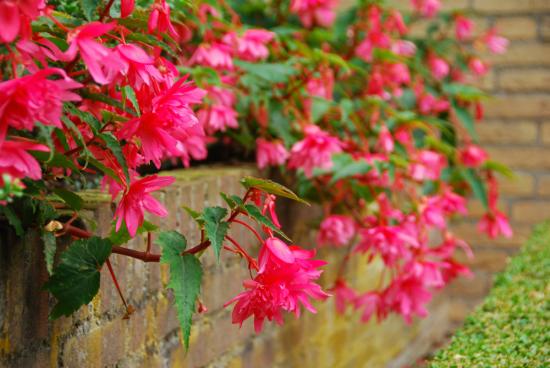
Rooting of vegetative parts and growth of young plants proceeds well at a temperature of + 22 + 24 degrees. Important! A long stay at temperatures above + 25 + 28 degrees can not only slow down growth, but also destroy young begonia. The growth of begonia also stops at a temperature of + 10 + 12 degrees. At temperatures below + 7, the plant may die.
Humidity and watering
Begonia feels good at air humidity of 70% and soil moisture at 80%. Young plants are sensitive to waterlogging, so they need regular watering without stagnant water. If there is excess water, the roots of young seedlings can become affected by root rot, which leads to the death of the plant. It is advisable to water both young and adult plants with water at room temperature.
Watering the plant with water whose temperature is below + 12 degrees is contraindicated. When watering, avoid getting water on the leaves. If it is possible to create conditions in the room close to those listed above, then you can begin reproduction begonia.
Begonias reproduce quite easily. For this you can use:
Reproduction of begonia by vegetative parts
Leaf propagation
It is best to choose a leaf for propagating begonias at the end of winter or in the spring; perhaps, time propagation by leaf to coincide with the transplantation of an adult plant. The simplest and most accessible way is to root a whole leaf with a petiole. To do this you will need:
- leaf with petiole
- plastic glass or other container with a capacity of 200 - 250 ml
- activated carbon tablet
- clean, settled water
Dissolve a charcoal tablet in water and lower the petiole of the cut leaf. Leave everything in a bright, warm room. The water can either be changed or added once a week. As soon as the roots appear, the leaf transplanted in a pot. After about 6-8 weeks, the formation of a new plant will begin. It is advisable to root 2-3 leaves at the same time.
If only one leaf is available for propagation, but you need to get several plants, then you can cut it into several pieces.
Important! Each fragment should have 1-2 veins. Fill suitable containers with a mixture of peat and sand. Moisten everything well. Plant parts of the leaf cut side down. Cover each container with a transparent bag or part of a plastic bottle.
Place everything in a warm, lit place. As the humidity decreases, the soil under the leaves needs to be sprayed. From about 21-22 days, the covers need to be removed for a few minutes. Gradually, the time spent outdoors is increased. After a couple of weeks, the shelter is completely removed. It takes 2.5 - 3 months for a young begonia to fully form.
Propagation by cuttings
This method, unlike the previous ones, allows you to get a separate plant much faster. For rooting, either the apical part of the shoot is cut off, or the middle cuttings are cut. This is convenient to do when transplanting an adult plant. The length of the cuttings is 10 - 12 cm. On each cuttings leave no more than two leaves.
Video about begonia propagation:
The sections can be dried with crushed charcoal. Next, place the cuttings in a container with water and wait for the roots to appear. As soon as their size approaches 1 cm, the young begonias can be planted in permanent pots. You can root cuttings directly in begonia soil.
Rooting tubers or rhizomes
Cut the rhizome or adult tuber into pieces. Air dry the sections. Embed the parts in damp soil. Place the containers in a warm place, sprinkling them with water from time to time. The best time for such propagation is spring or early summer when replanting an old bush. In addition to the vegetative parts, seeds can be used to propagate begonias.
Propagation by seeds
Although this method is rarely used in amateur breeding of begonias, it is still sometimes used by flower growers. Containers for sowing seeds should be filled with light soil from equal parts of garden soil, peat and sand. Moisten everything well. Begonia seeds are small, so they can be mixed with crushed chalk for even distribution over the soil surface. After sowing, you need to take a board and lightly press the chalk together with the seeds. Into the ground seeds not closed.
Cover the boxes with glass or film and keep them indoors at a temperature of + 20. As soon as the seeds germinate, they are placed in diffused light. After 1-2 true leaves appear, the seedlings are planted in separate pots.It should be remembered that seed propagation is suitable for varietal and species begonias and is not suitable for hybrid ones.

The good thing about begonia is that you can choose plants not only by the shape and color of the flowers, but also by the shape and color of the leaves. You can create entire color compositions in accordance with the interior of the room. Obtaining the desired plant at home, as follows from the above, is not at all difficult.

